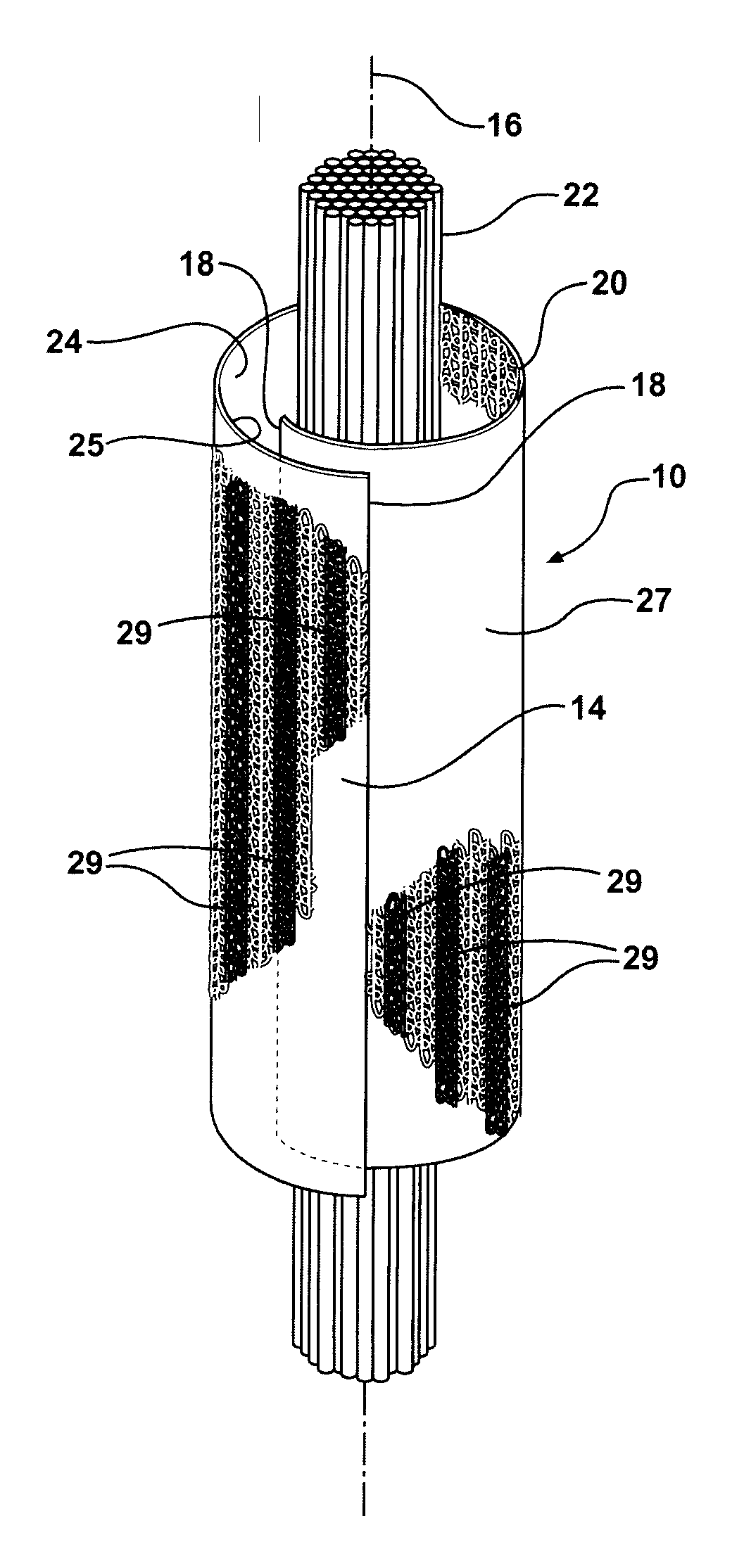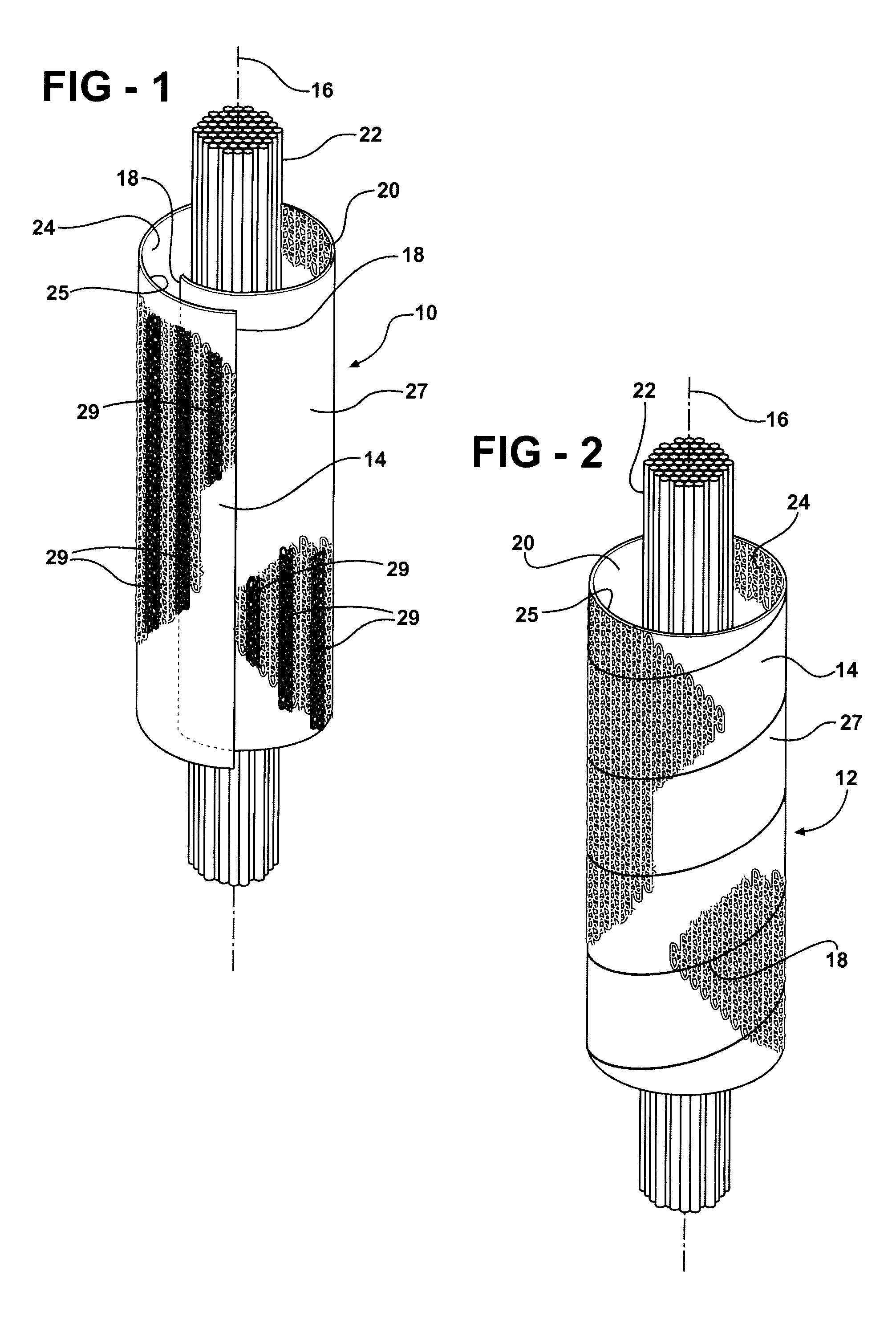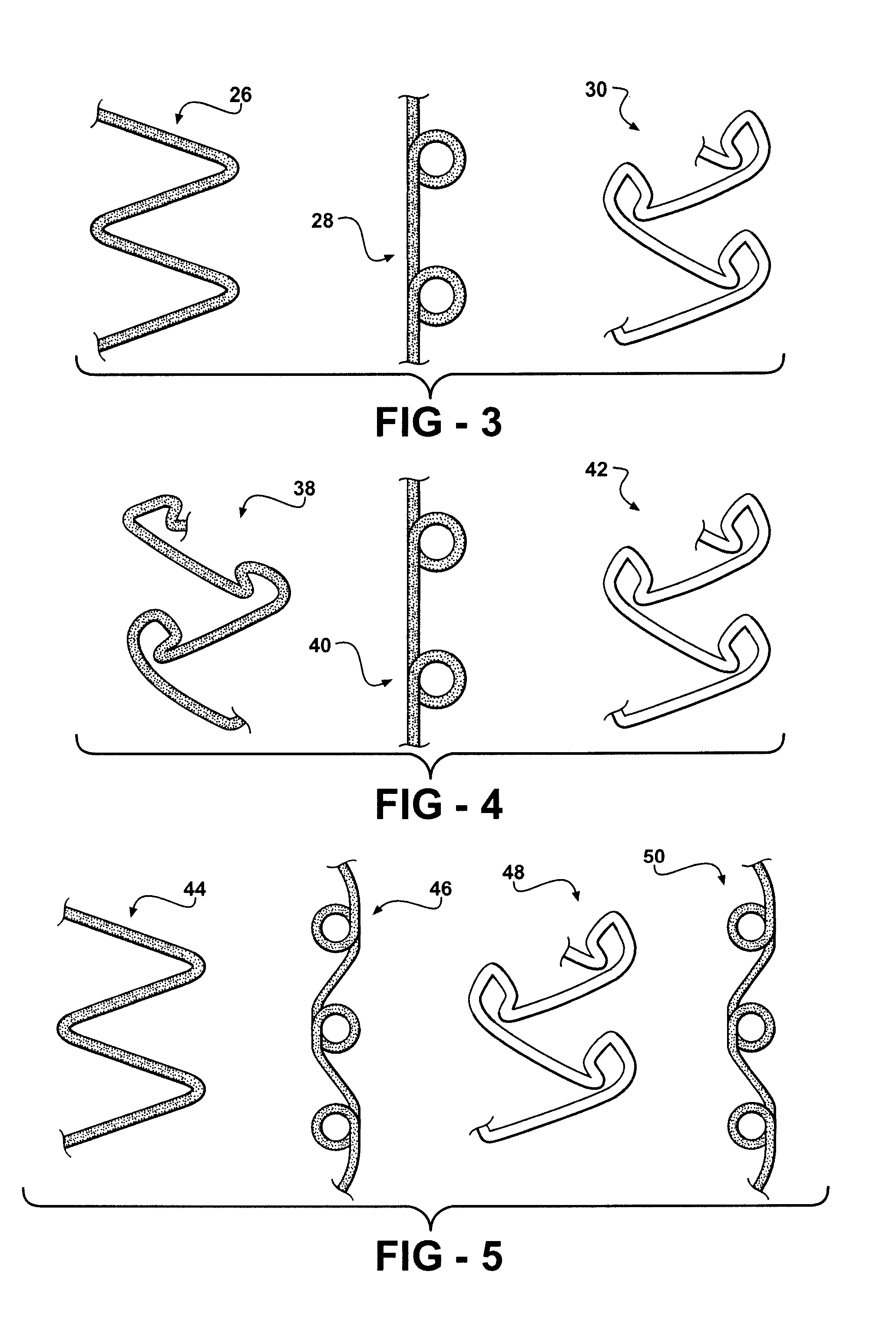Self-curling knitted sleeve and method of fabrication
a self-curling, knitted technology, applied in knitting, ornamental textile articles, textiles and paper, etc., can solve the problems of biasing, add to the cost and time required to produce the sleeves, and achieve the effect of facilitating the imparting of bias
- Summary
- Abstract
- Description
- Claims
- Application Information
AI Technical Summary
Benefits of technology
Problems solved by technology
Method used
Image
Examples
example 1
SUBSTRATE EXAMPLE 1
[0025]FIG. 3 schematically illustrates the yarns and stitches used to construct Fabric Example 1. The fabric 14 has one yarn is knitted with a (4-1, 4-1) lay-in stitch 26 over four needles on a first bar, another yarn is knitted with a (2-1, 2-1) closed chain stitch 28 on a second bar, and another yarn is knitted with an (5-4, 1-2) or (4-3, 1-2) open tricot satin stitch 30 on a third bar of a knitting machine (not shown). The laying-in stitch 26, also referred to as lay-in or laid-in stitch, and the chain stitch 28 are knitted under a generally balanced tension relative to one another, while the open tricot stitch 30, and preferably a satin or super-satin tricot stitch, is knitted under an increased constant tension relative to the laying-in and chain stitches 26, 28, thus, imparting a self-curling bias on the resulting fabric 14. In the actual samples produced, multifilament yarn of 350 denier formed of PET filaments was used for the laying-in stitch 26, and mult...
example 2
SUBSTRATE EXAMPLE 2
[0027]FIG. 4 schematically illustrates the yarns and stitches used to construct Fabric Example 2. The fabric 14 has one yarn knitted with an open tricot stitch 38 on a first bar, another yarn knitted with a closed chain stitch 40 on a second bar, and another yarn knitted with an open tricot stitch 42 on a third bar of a warp knitting machine (not shown). In the actual sample produced, multifilament yarn of 350 denier formed of PET filaments was used for the first open tricot stitch 38, multifilament yarn also of 350 denier and formed of PET filaments was used for the closed chain stitch 40. The open tricot stitch 42 which forms the basis of the inner convex surface 25 was formed of 10 mil PET monofilament. This example uses only open tricot stitches and closed chain stitches, with the lay-in stitch discussed above in Example 1 being absent. The needle notation for the open tricot stitches 42 and the closed chain stitches are the same as in Example 1. Also, the yar...
example 3
SUBSTRATE EXAMPLE 3
[0028]FIG. 5 schematically illustrates the yarns and stitches used to construct Fabric Example 3. The fabric 14 has one yarn knitted with a lay-in stitch 44 over four needles on a first bar, another yarn knitted with a closed chain stitch 46 on a second bar, another yarn knitted in an open satin or super-satin tricot stitch 48 on a third bar, and another yarn knitted with a closed chain stitch 50 on a fourth bar of a knitting machine (not shown). In the actual sample produced, multifilament yarn of 2×167 dTex formed of PET filaments was used for the lay-in stitch 44 and for both closed chain stitches 46 and 50. The open tricot stitch 48 was formed of 0.010 inch PET monofilament. Having two bars of closed chain stitches 46 and 50 mark this example as a classic crochet knit fabric. The needle notation for the lay-in stitch 44, the open tricot stitches 48 and the closed chain stitches 46, 50 are the same as in Example 1. Also, as with the previous embodiments discuss...
PUM
 Login to View More
Login to View More Abstract
Description
Claims
Application Information
 Login to View More
Login to View More - R&D
- Intellectual Property
- Life Sciences
- Materials
- Tech Scout
- Unparalleled Data Quality
- Higher Quality Content
- 60% Fewer Hallucinations
Browse by: Latest US Patents, China's latest patents, Technical Efficacy Thesaurus, Application Domain, Technology Topic, Popular Technical Reports.
© 2025 PatSnap. All rights reserved.Legal|Privacy policy|Modern Slavery Act Transparency Statement|Sitemap|About US| Contact US: help@patsnap.com



